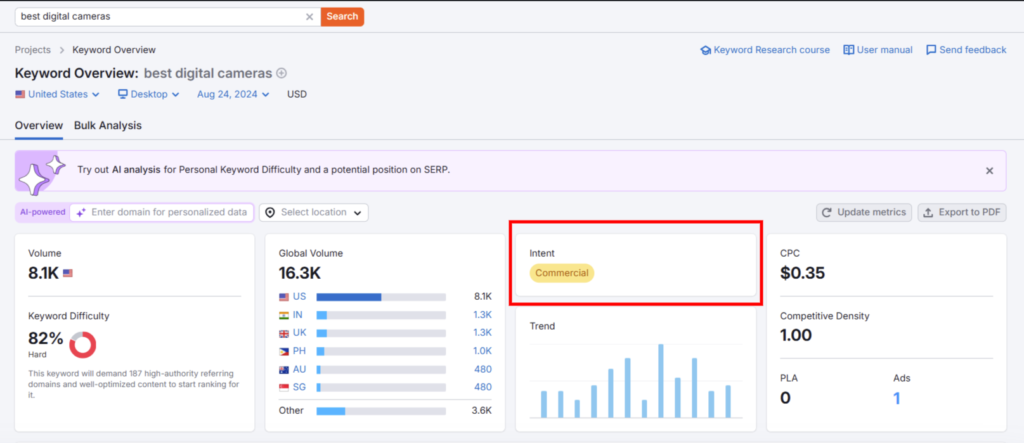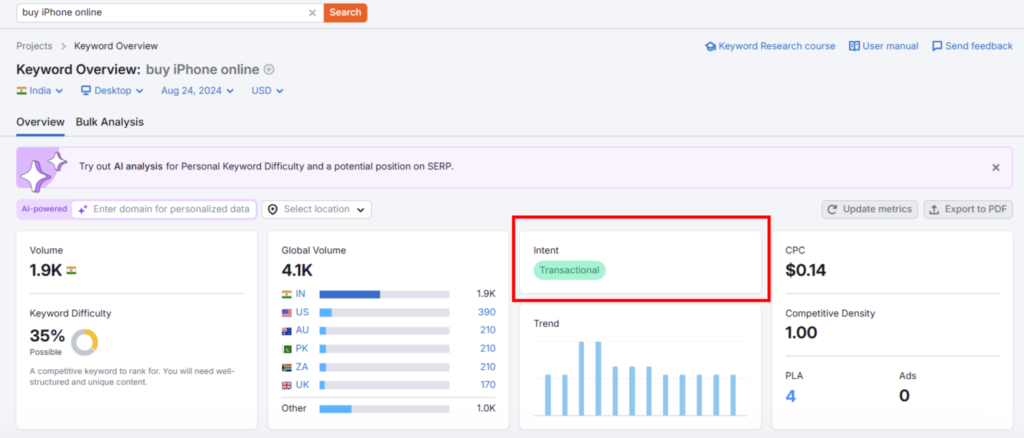Types of Keyword Intent in SEO: Understanding the Different User Intent Types
Keywords are the building blocks of any search engine optimization (SEO) strategy. However, to effectively optimize your content for search engines, it’s crucial to understand the different types of keyword intent. In this comprehensive guide, we’ll delve into the various types of keyword intent in SEO and how you can leverage them to boost your rankings and improve the overall performance of your website.
What is Keyword Intent in SEO?
In the context of SEO, keyword intent refers to the underlying goal or intention behind a user’s search query. Understanding keyword intent is essential because it allows you to create content that aligns with the user’s needs, ultimately leading to higher engagement and conversion rates. There are four primary types of keyword intent in SEO, each serving a distinct purpose in the user’s search journey.
Types of Keyword Intent
Informational Intent:

This type of keyword intent is geared towards users seeking information or answers to specific questions. Keywords with informational intent often include phrases like “how to,” “what is,” “guide,” “tutorial,” and so on. For instance, a search query for “how to do keyword research” indicates informational intent.
Navigational Intent:

Navigational intent keywords are used when a user is looking for a specific website or webpage. These keywords are often branded or specific to a particular entity. For example, a search for “Instagram” demonstrates navigational intent.
Commercial Investigation / Consideration Intent:
This type of keyword intent is indicative of users who are in the consideration or evaluation stage of making a purchase. Keywords with commercial investigation intent might include terms like “compare,” “best,” “top,” “review of,” etc. For instance, a search query for “best digital cameras” signifies consideration intent.

Transactional Intent:
Finally, transactional intent keywords are used when a user is ready to make a purchase or engage in a specific online transaction. These keywords often include phrases like “buy,” “discount,” “purchase,” “free shipping,” and so forth. For example, a search for “buy iPhone X online” clearly demonstrates transactional intent.

FAQ
Identifying the intent behind a keyword is a critical step in the keyword research process. Fortunately, there are several tools and methods available to gauge keyword intent effectively. One popular approach is to perform the actual search query and analyze the type of content that ranks prominently for the keyword. Additionally, keyword intent checkers and finders can provide valuable insights into the intent behind specific keywords, aiding in the strategic optimization of your content.
Keyword intent checkers and finders are tools that help assess the intent behind specific keywords. These tools analyze various factors, such as search results, user engagement metrics, and semantic analysis, to determine the likely intent behind a given keyword. By utilizing these tools, SEO professionals can gain a deeper understanding of user search behavior and tailor their content to better address the identified intent.
An example of keyword intent can be observed in the search query “best budget laptops.” In this case, the user is likely in the consideration stage of purchasing a laptop and is seeking information on affordable options. By recognizing the commercial investigation intent behind this keyword, businesses can create content that provides valuable insights into budget-friendly laptop options, ultimately catering to the user’s specific intent.
In conclusion, understanding the different types of keyword intent in SEO is pivotal to crafting content that resonates with your target audience and aligns with their search intentions. By identifying and leveraging the various keyword intent types, you can optimize your content to meet the diverse needs of users at different stages of the customer journey, ultimately driving organic traffic and achieving your SEO goals.




